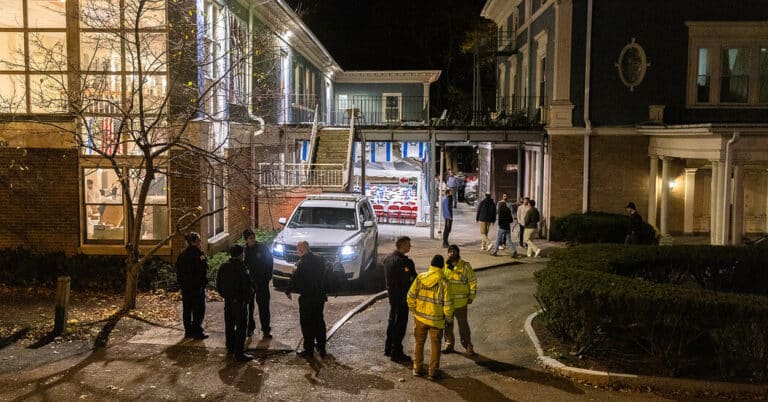In the days following the attack by Hamas on Israel, Max Strozenberg, a first-year student at Northwestern University, experienced unsettling incidents. Upon entering his dorm, he was surprised to see a poster referring to Gaza as a “modern-day concentration camp” pinned to a bulletin board alongside Halloween decorations. At a pro-Palestinian rally, he heard students chanting, “Hey, Schill, what do you say, how many kids did you kill today,” directed at Northwestern’s Jewish president, Michael H. Schill. These incidents have left Strozenberg feeling defiant and unsafe, as he believes the mood on campus has shifted to being antisemitic rather than pro-Palestinian.
Since October 7th, when Hamas killed over 1,400 people in Israel, tensions on American college campuses have escalated into open hostility. Several protests have turned into physical altercations, and both Jewish and Muslim groups have reported an increase in bias attacks. The meaning behind these demonstrations is highly contested. Pro-Palestinian students argue that they are advocating for the oppressed people of Gaza, while critics claim that many of the slogans and protests support terrorism and antisemitism.
Jewish students have reported numerous antisemitic incidents, such as projecting slogans like “Glory to Our Martyrs” onto a library facade at George Washington University and scrawling “The Jews R Nazis” near a Jewish fraternity at the University of Pennsylvania. At the Cooper Union, Jewish students were forced to hide behind locked doors while demonstrators shouted “Free Palestine” and banged on the doors and windows. A computer science major at Cornell was arrested for making online threats to shoot up a kosher dining hall and harm Jewish students.
Many Jewish students are not only alarmed by these attacks but also deeply disturbed by the appropriation of Holocaust imagery to demonize Jews or Israel. Accusing Israel of “genocide” or “ethnic cleansing” is seen as a form of antisemitism, particularly for those who believe Israel had the right to defend itself after the Hamas attack.
The debate over acceptable language has only intensified the animosity on college campuses. Pro-Palestinian supporters argue that cries of antisemitism are aimed at stifling speech and diverting attention from the blockade of Gaza by Israel. They draw parallels to other social justice movements and use terms such as “anticolonial” and “apartheid regime” to describe the Israeli-Palestinian conflict. However, pro-Israel students and activists contest these terms, pointing out that many Jews are themselves refugees who have faced persecution and that Israelis have diverse ethnic backgrounds.
The crisis has sparked a series of statements and counterstatements from college administrators, students, faculty, and alumni. Each letter takes issue with the language used by the opposing side, contributing to a widening gyre of recriminations. The generational divide on campuses has further inflamed the debate, with younger voters expressing greater criticism of Israel compared to older generations.
Overall, the situation on American college campuses remains tense, with little agreement on acceptable language and a growing divide between pro-Palestinian and pro-Israel groups. The rise in antisemitic incidents and bias attacks is a cause for concern, as it reflects a broader issue of intolerance and hostility towards Jewish students.


